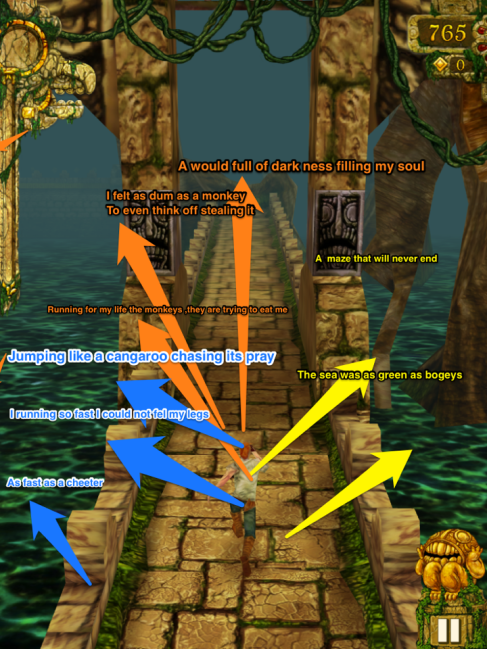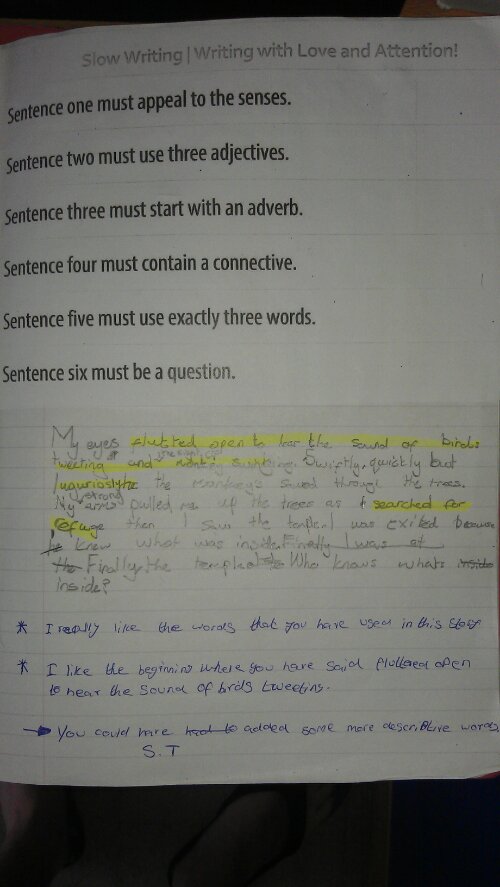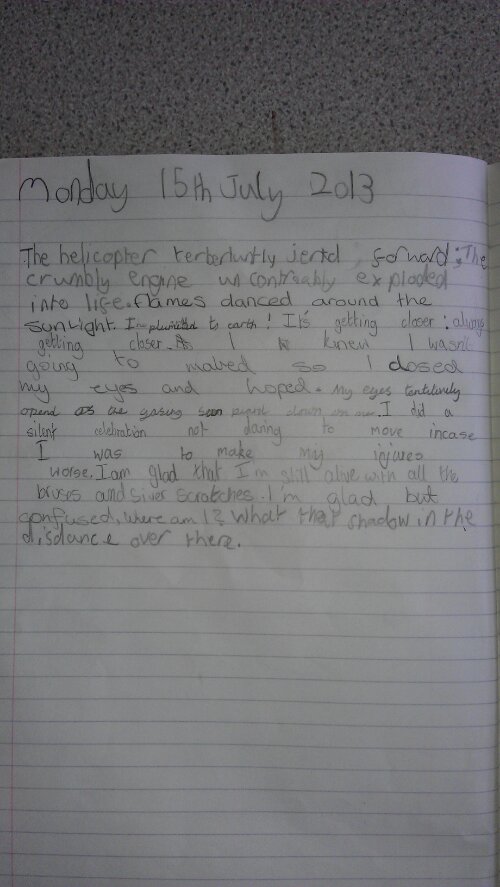Twitter has been a constant source of ideas for me this year. Whether it has been making 3D snowflakes, finding out more about personalising blogs or simply discussing apps/websites and such, someone always has an answer.
I’m sure you’ll all have heard of, read and maybe even tried Lee Parkinson’s (@ICT_MrP) idea of combining the popular iPad game Temple Run with Literacy. If not, why are you still here? Go and find out.
We had a small gap in our timetable at the end of a frantic summer term so I decided to give Temple Run a go. We followed Lee’s plan fairly closely – we discussed where the game would come in a traditional story hill, developed characters and finally produced films, trailers and other digital media.
We used Skitch to develop the description of characters, as recommended. I found this particularly useful with my boys, particularly those who haven’t shown a real love or interest in writing. Below is an example.

The pictures created were shared using Showbie. If this isn’t something you have used before with iPads, then I really recommend it. It is so easy to set up that you can’t really fail to go wrong – log in as a teacher, distribute the 5 digit code to your class and set up a folder for them to add to. Children need to set up their own log-ins too – mine used the same user names and passwords as they’d use for the blog in order to remember them. Showbie allows you to add photographs, drawings, annotated images, presentations, videos…anything really. And the best thing is that you can access it from both your iPad and your desktop.
Following this, we used Slow Writing to really focus in on what it was that was being written. Was it powerful? Is it repetitive? Does it entice the reader in? I’ve used Slow Writing since January when I read about it on Twitter (can’t remember who mentioned it, sorry), and it certainly has had an impact. I now try to plan at least one Slow Writing lesson within an longer writing block in order to extend the children’s thinking. One of my SEN boys even managed to include an embedded clause because the pace was such that he could think long and hard about what it was before committing it to paper.
Finally, by sheer joyful coincidence, Stephen Lockyer (@mrlockyer) published a post about a form of writing which he has dubbed Rotational Writing. Seeing as my class were nearing the end of their Temple Run stories, I decided to give it a go.
The story was split into 5 paragraphs, with a group of 6/7 children responsible for each one. These 6/7 children passed their books around the table to write one sentence at a time within a time limit of one minute. As the paragraphs got longer, the children were allowed a little more time to read, and some of the writing produced was excellent. Sentence structure was hugely improved, language was thought about more carefully and mistakes were rectified fairly quickly (“what you’ve written doesn’t make sense” “oh yeah…”)
Rotational writing is something I would like to try, if possible, with a whole class to create 30-odd different stories from the same starting point. The children were wholly engaged and could see the stories develop as the books were passed around two or three times (we did this activity for about half an hour). See the results for yourself here.
As for Temple Run, there is no doubt that the children were excited about the unit from day one until the end. Some children told me that they’d informed their parents about the fact we were writing stories about the game, while two of the boys who are renowned for, well, being boys, came to me on the second day and reported that they’d been planning their stories together at playtime. Perfect.
This short unit has made me think about what it is we are trying to achieve with the children. Do we need to follow the same formula for teaching a unit of Literacy every single time? More than one way to skin a cat and all that…We try, wherever possible, to link Literacy to our Topic. Maybe this is detracting from what should come first – the children. If the children are engaged with whatever it is we are trying to teach them, surely they will learn more?
My only regret about the Temple Run unit is that we didn’t try it sooner. Perhaps then we would have seen whether it made any longer-term impact upon the children. I’m betting it would have done.











